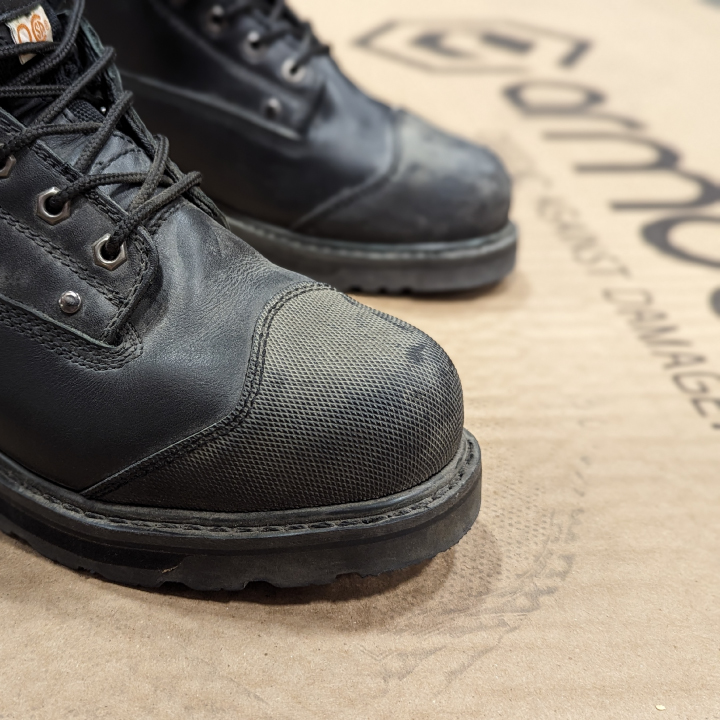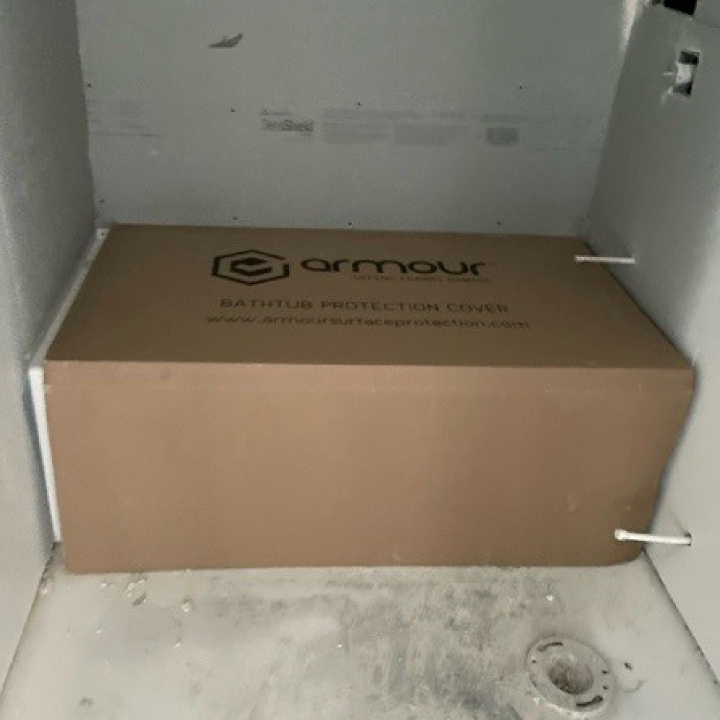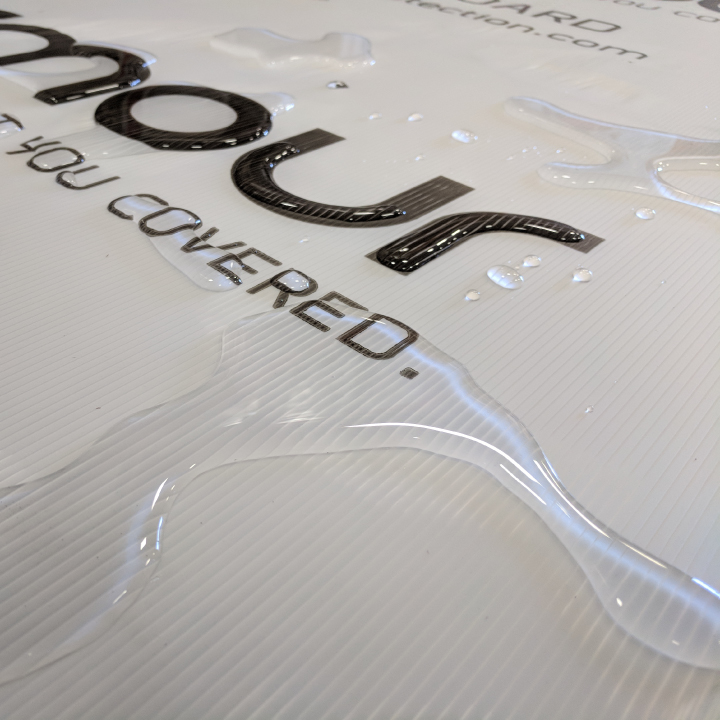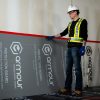Hints & Tips
Plywood Alternatives: Bathtub Protection In Multi-Family Construction
July 22, 2024
Let’s get real about bathtub protection during multi-family builds. We all know plywood is the old faithful for surface protection. It’s tough, but has its downsides such as water damage and mould, as well as being difficult to fit around tubs. We’ve got the lowdown on why ditching plywood for newer options could save you time, cash, and a ton of hassle. Let’s dive in and see what really stacks up.
Plywood For Bathtub Protection

Plywood has long been a staple in construction for temporary surface protection, including bathtubs. Here’s why:
Readily Available
Plywood is everywhere so it’s no wonder it’s a go-to for many multi-family construction projects. You can grab it from any hardware store at a moments notice.
Durability And Strength
Plywood brings the muscle. It’s tough enough to take on physical impacts and heavy foot traffic. On an active job site, that’s a must-have.
However, there are notable drawbacks to using plywood:
Movement = Damage
Here’s the catch—the rough composition of plywood can damage a tub with the slightest movement. Without an extra layer between the tub and plywood, the tub is liable to get all scratched up.
Handling And Installation Difficulties
Cutting and fitting plywood around bathtubs? It’s a hassle. It takes a lot of time and manpower to get it just right, which can slow down your multi-family project.
Comparing Plywood And Alternative Options

It’s easier to have all the info right in front of you so you can make the most informed decision. Here’s a handy table with all the facts lined out.
| Plywood | Alternatives | |
| Costs | There is the initial cost of purchasing it, followed by the time it takes to cut down to size and the waste that occurs: only one tub can be covered from an entire sheet of plywood. | More affordable, while the faster installation times and minimal to no waste result in further decreased costs. |
| Ease Of Installation | It’s a hassle. Cutting and fitting takes a lot of time and effort. | Generally quicker and easier to install, which means you save on labour costs and time. |
| Effectiveness | It’s tough against physical impacts but is heavy and hard to handle. | Top-notch protection against both impacts and movement, keeping your bathtub safe and sound. |
| Environmental Impact | Cutting it to fit around the tub results in unnecessary offcuts and wastage. | Purpose-designed products, many reusable and/or made from recycled materials, ensure minimal waste and a nod to sustainability. |
Plywood Alternative Options For Bathtub Protection

Now you have all the facts, let’s talk about alternatives to plywood for bathtub protection. Here are some top-notch options that’ll save you time, money, and hassle:
Armour Bathtub Protection Cover
A durable cardboard cover that’s tough enough for any jobsite. Lightweight, easy to install, reusable, and even doubles as a work surface.
Bathtub Protection Liner
These semi-flexible plastic liners fit standard tubs like a glove. They provide strong protection, are a breeze to install, and can be used again and again.
Armour Multi-Use Protection Tape
Thick, tough tape for all your hard surfaces. This versatile option is great against scuffs and scratches and peels off cleanly without a fuss.
Armour Liquid Mask
This water-based gel dries into a flexible, removable film. It protects against scratches, paint, drywall mud, cement—you name it—and sticks well to non-porous surfaces. To remove it, just peel it off when you’re done.
Armour Protection Board – Translucent
A 2mm thick, lightweight, waterproof fluted plastic sheet that’s durable, easy to cut, and perfect for all sorts of multi-family construction projects.
Best Practices For Bathtub Protection

Step 1: Assessment
First, figure out what you’re dealing with. Consider the amount of moisture exposure, potential impact damage, and the length of time the protection needs to last.
Step 2: Selection
Pick the right gear for the job. For heavy-duty protection, grab Armour Bathtub Protection Covers. For tricky, uneven surfaces, the Armour Liquid Mask is your best bet.
Step 3: Installation
Follow the manufacturer’s guidelines to get it right. Make sure everything’s secure so it doesn’t move or get damaged during the job.
Step 4: Maintenance
Keep an eye on your protection throughout the multi-family construction project. If anything gets damaged, swap it out or fix it right away to keep things covered.
Conclusion
When it comes to bathtub protection in multi-family construction, plywood may have been the go-to, but it’s far from perfect. The alternatives like Armour Bathtub Protection Cover, Bathtub Protection Liner, and Armour Liquid Mask offer better protection against moisture and impact, easier installation, and more reusability. Making the switch can save you time, money, and headaches.
Choose the right protection to keep your job sites running smoothly and your tubs pristine. Ready to upgrade? Check out our top picks to keep your multi-family projects top-notch.
Why entrust your projects to our specialists? Simply put, we’ve earned our stripes as the market-leading temporary surface protection specialists. We don’t just know surface protection; we live and breathe it.


